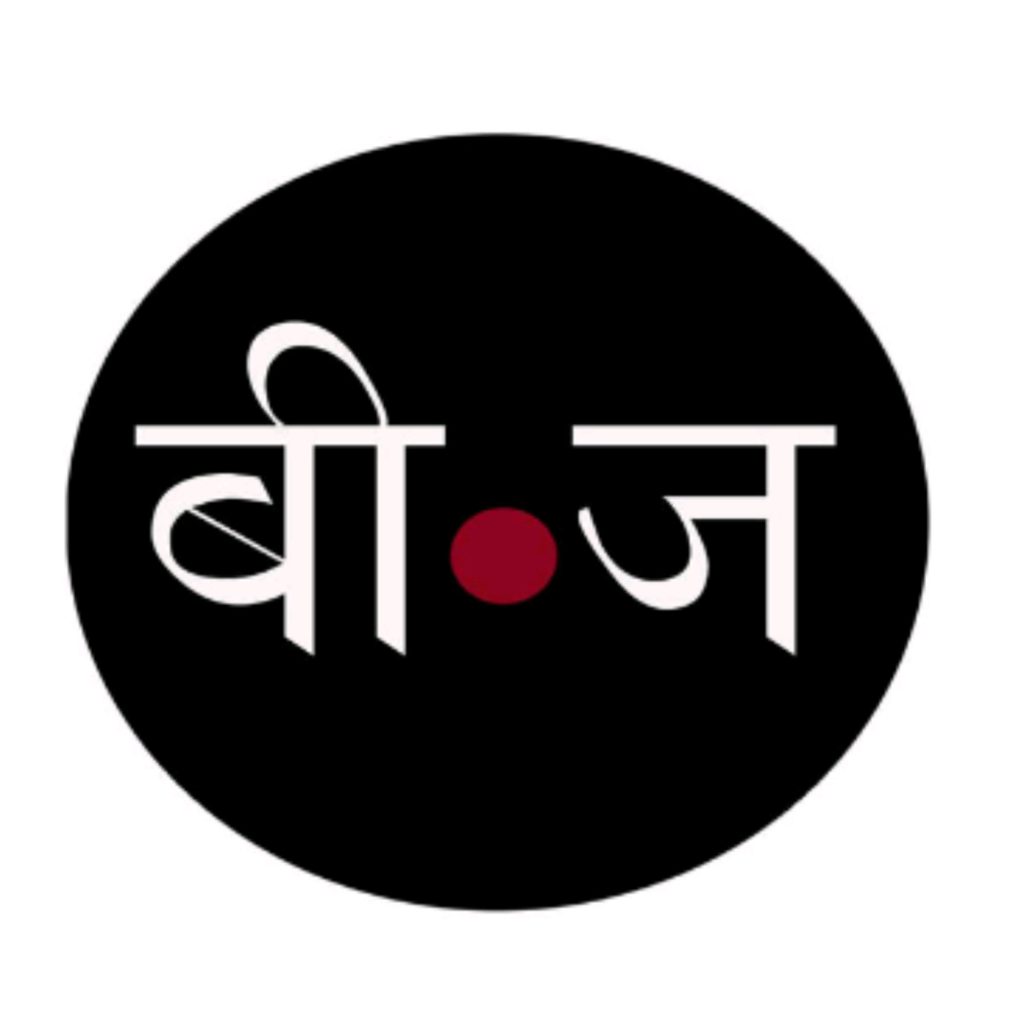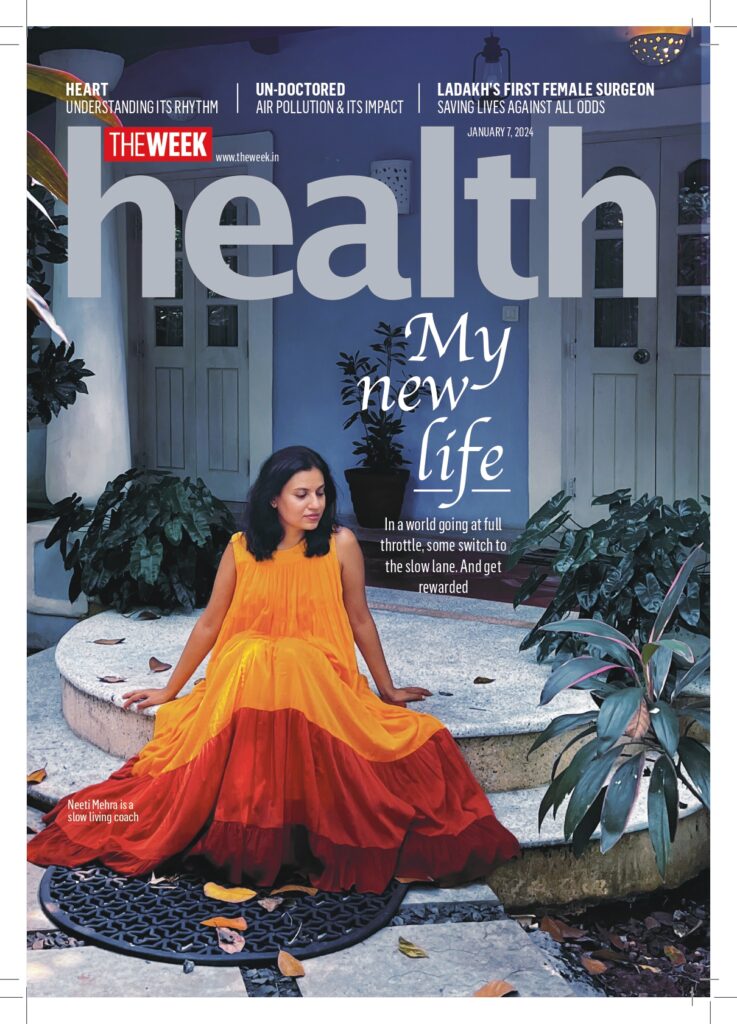Coming home
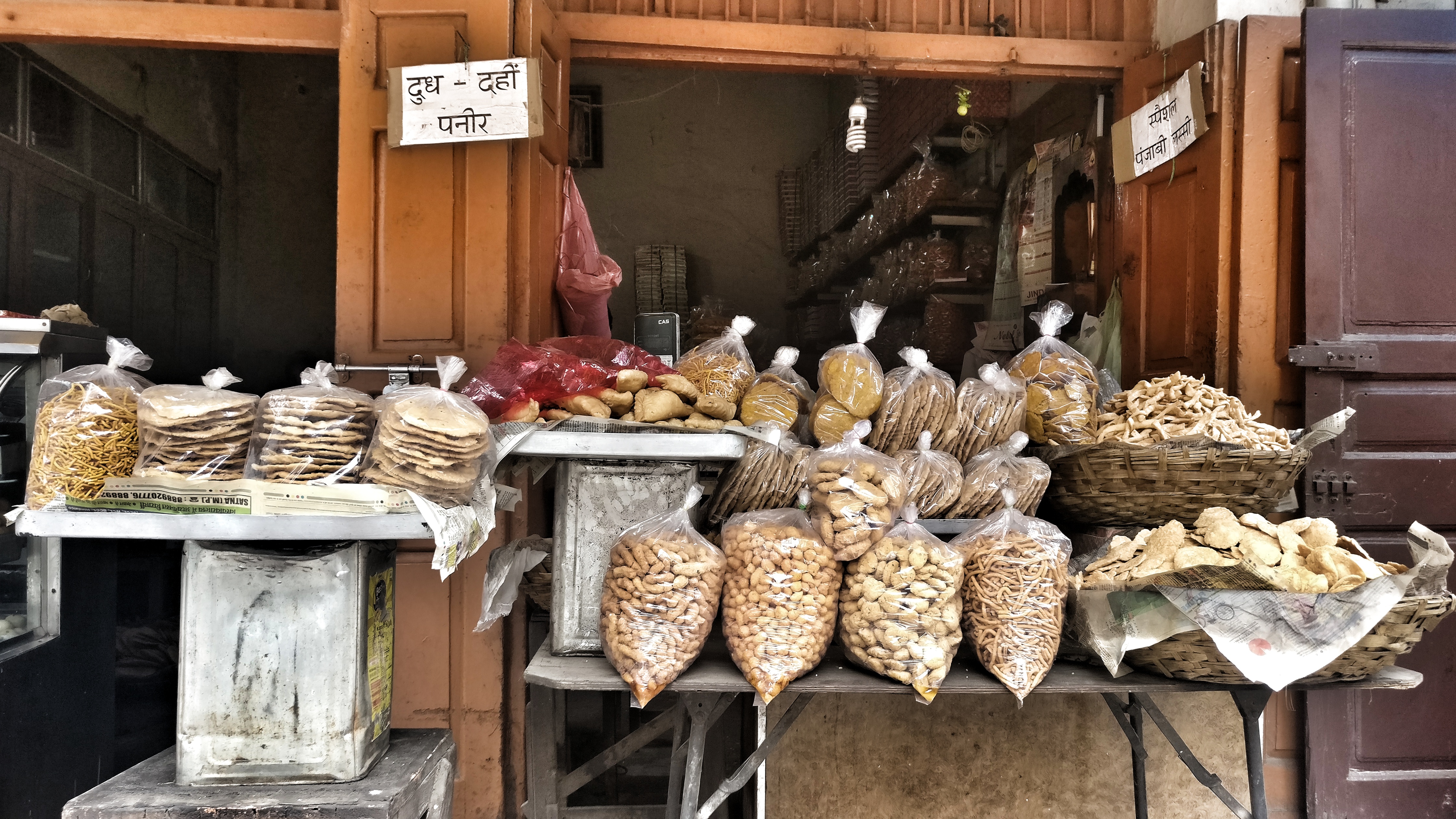
On our first solo trip together, I visit Amritsar with my father, the city where he was born, embracing my identity and discovering my family history along the way
My father was born in Amritsar at his grand parents’ house on a bitterly cold January day in 1946. A bonny baby with big eyes and curly hair, he flourished in the land of milk and honey, losing his locks rapidly over the years, after he moved out of the city. For my grandparents, who lived in Lahore, the years following the partition were tumultuous. My grandmother, my father and his sister stayed back in Amritsar, never to visit Lahore again, while my grandfather shifted to the US for a few years, in pursuit of a better future; a future torn asunder by a single line dividing the country.
For a Punjabi who had visited Amritsar just once in her life, I blithely packed my bags when I heard the father was going there for a holiday. While he was fixated on the city’s development—the sparkling new heritage street and The Partition Museum—I wanted to burrow deeper into its past, understanding the culture and history of my city that shaped the food I ate, the clothes I wore and the language I spoke at home— a hodge podge of Hinglish peppered with Punjabi.
We drove down from the mountains to Amritsar on a hot summer day, with scarcely a cloud in the sky. Amritsar literally means a pool of nectar, named after the Amrit Sarovar, the placid waters that surround the Harmandir Sahib, or the Golden Temple, a sacred shrine for people of all faiths. The city was simmering, but faith kept us on.
From our hotel, the heritage street, which started at the Town Hall and ended at the Golden Temple, was a short stroll through Hall Bazaar—a tangle of shops selling hardware, phulkari, juttis and other odds and ends. We started at the Town Hall, a stately building, and moved towards Jallianwala Bagh.
The kilometre-long stretch was unrecognisable since I last saw it years ago. Neatly paved, all vehicular movement had been curtailed, except for the odd scooter or motorbike fishtailing past. The wires dangling overhead had been tucked underground. Teardrop street lamps dotted the streets, illuminating the stone facade and their neat signboards. The path was paved with huge statues—a group of girls performing the gidda, followed by a group of boys doing bhangra.
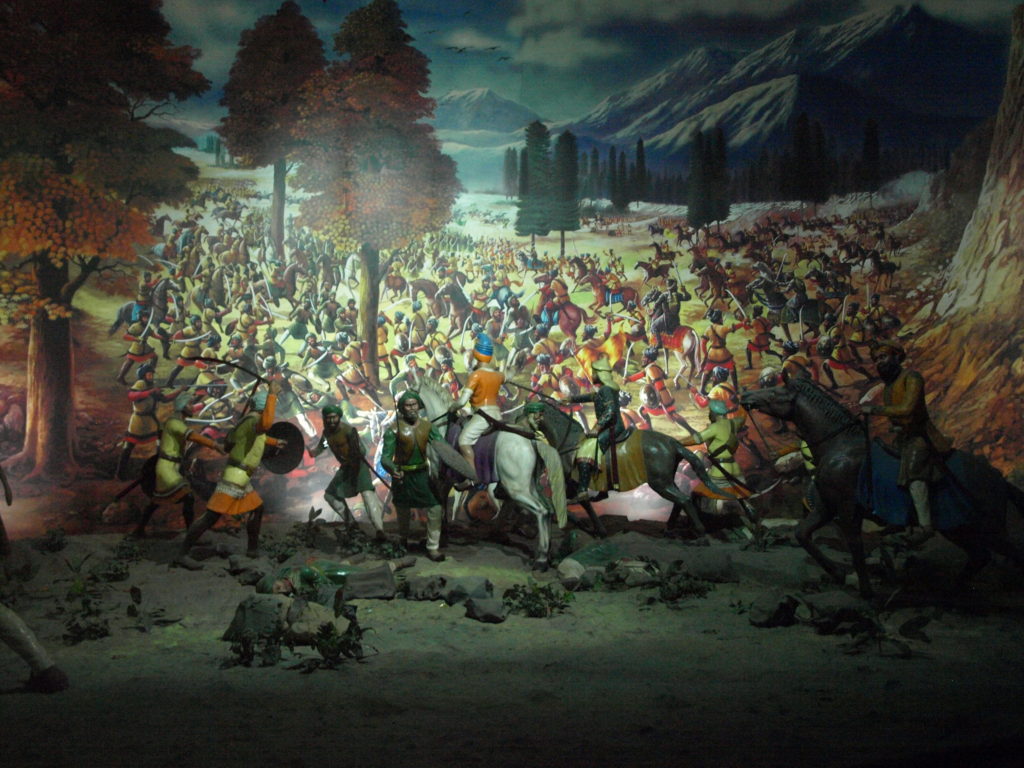
The great warrior -Ranjit Singh
Passing a gigantic statue of Ranjit Singh, we made our way through the narrow pathway of Jallianwala Bagh, symbolic of our peaceful struggle for freedom. Rife with children running around and the shrill call of birds, it was unthinkable that a horrific massacre took place here decades ago. Bullet marks riddled the walls and my heart swelled up when I saw the martyr’s well, barricaded and gloomy—a pit of dark nothingness.
Dusk approached. Little orbs of light surrounded the street lamps. We made our way to the temple, its white marble visage decorated with golden lights, a wondrous mirage rising from the flat ground. I wouldn’t describe my father as overtly religious, but this was a pilgrimage he made every time he was visiting the city. Sitting by the limpid pool of water, watching its golden reflection on the gentle waves, a strong sense of peace washed over me. And I understood what the city meant to him.
The next morning we visited The Partition Museum. After my grandfather returned from the US, the family moved to Kolkata and finally to Mumbai, while the rest migrated to Delhi. Those who fleed Lahore lost everything. They thought one day they would return home. It wasn’t meant to be. After 70 years of the partition of India, finally, a physical memorial has been constructed.
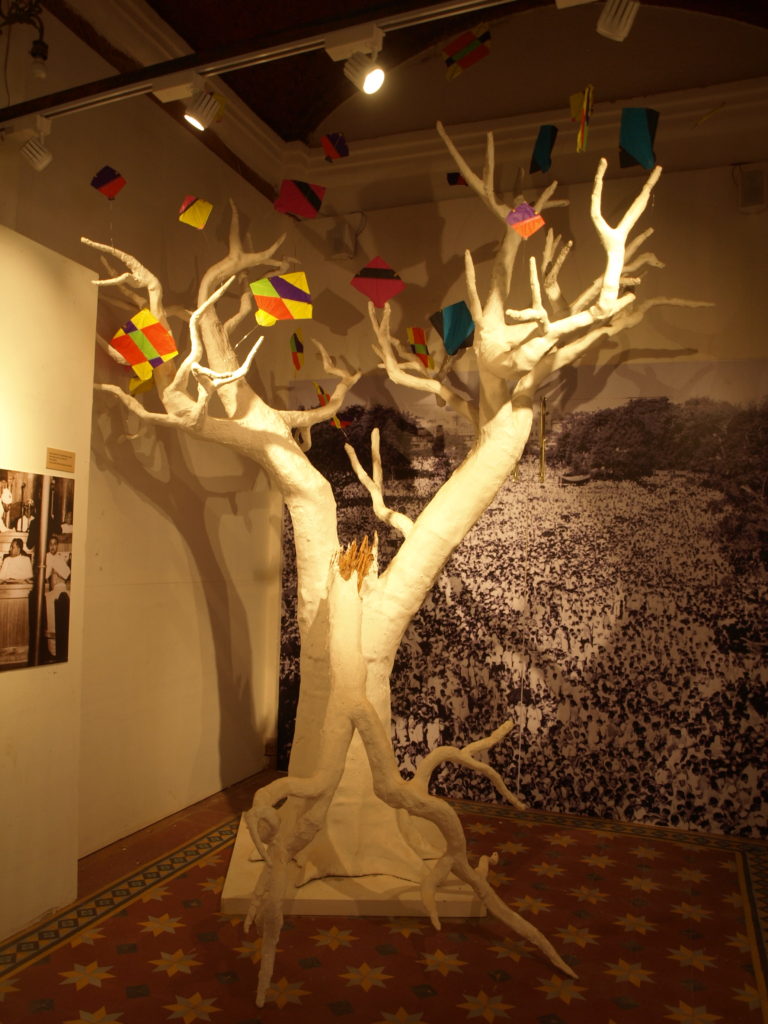
The poignant partiton museum
Located at the lovely Town Hall, when we arrived, chairs were being removed and the inauguration dias was being dismantled. With the battle of Plassey in 1757, the East India Company had India in its grips. With the first governor general, Warren Hastings, the trading empire billowed into a more insidious form—the Raj, which divided and ruled.
The museum is a collection of memories and objects. Photographs, still and moving images, sculptures and recordings tried to decipher a chilling moment in history that destroyed the fortunes of my family and countless others. Lives were rebuilt, but not without scars, which lingered over years.
Stepping out, we visited Surjit Food Plaza, where, over a plate of tandoori chicken, we spoke about what the partition meant to the family. After lunch and a big glass of lassi, we visited the Maharaja Ranjit Singh Museum, ensconced in a lovely building, but a disappointing tribute to the king nicknamed as the Lion of Punjab.
At night we visited another institution, Kesar da Dhaba that was set up in 1916, where we wolfed down palak paneer with maa ki daal and parathas, finished with phirni and matka kulfis. Breaking bread with the extended family, some of whom I had never met, was joyful. I ate another Kulfi just to celebrate this moment.
My father was born in a kothi in Katra Ahluwalia, in one of the alleys that surrounded the Golden Temple. The house is still part of the family, belonging to some relatives, now used as a warehouse. In a narrow lane, I walked in its doorway, up beautifully carved stairs, to the balcony on the first floor. I leaned out to look at the bustle below. Painted pale yellow and green, with beautiful carvings and pillars, I could just imagine what my father’s childhood looked like, running up and down the fleet of stairs in his grandparent’s home, on to the road and into the temple.
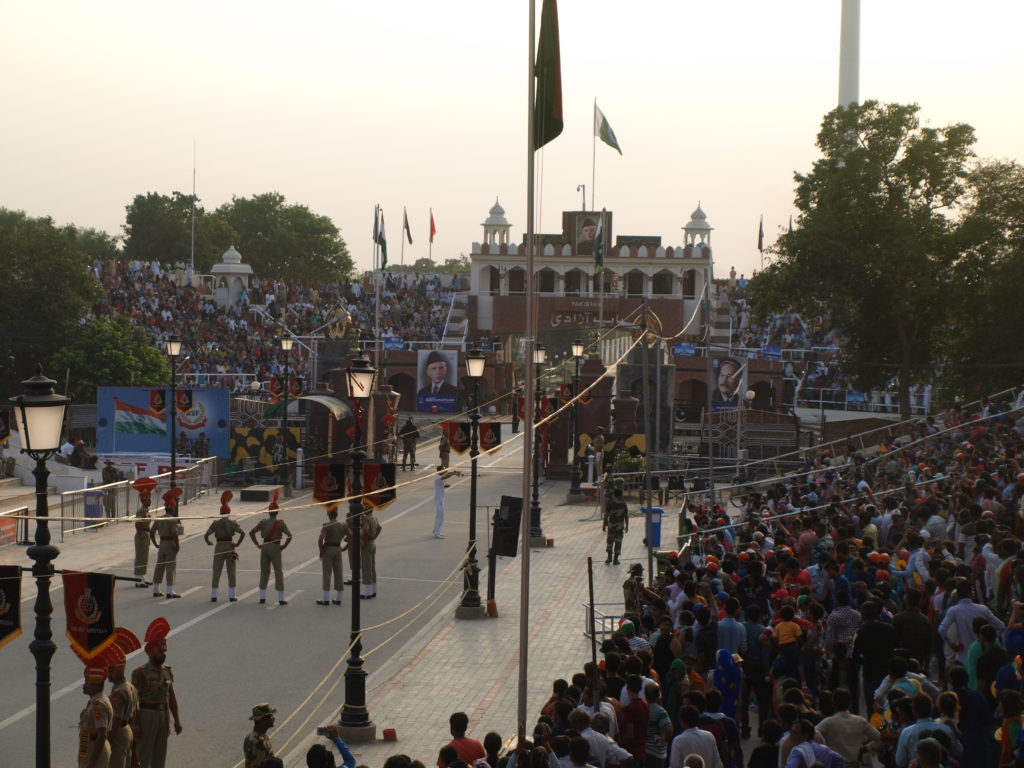
Patriotism at the Wagah border
After a meal of crispy Amritsari fish at makhan fish and chicken corner, we wended our way to the Wagah Border, our last stop in this trip. Arriving hours in advance, the sun beating down mercilessly on us, we waited patiently with a vast multitude of people who came to watch the changing-of-guards ceremony. The atmosphere was palpable, almost euphoric. The excitement crackled, with flags fluttering high in the sky, and deafening cheers carrying across the border. I knew this was home and I was safe. And hopefully, I would revisit this lovely city once again.
This piece appeared in the November 2017 edition of Jet Wings.
